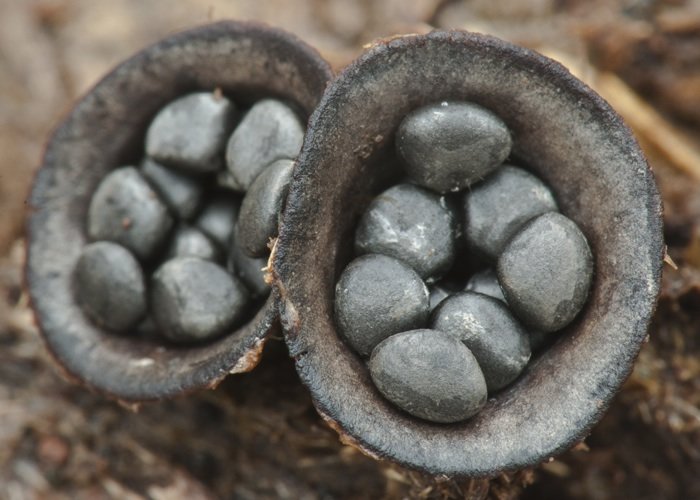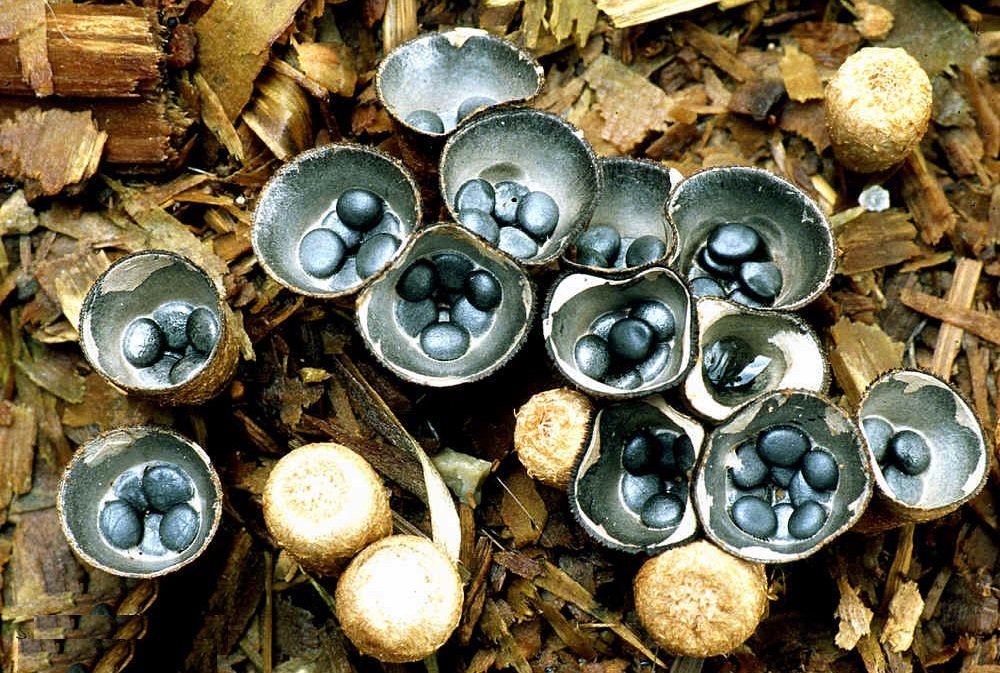Dung goblet (Cyathus stercoreus)
- אָפּטייל: Basidiomycota (Basidiomycetes)
- סאַבדיוויזשאַן: Agaricomycotina (Agaricomycetes)
- קלאַס: Agaricomycetes (Agaricomycetes)
- סובקלאַס: Agaricomycetidae (Agaricomycetes)
- סדר: אַגאַריקלעס (אַגאַריק אָדער לאַמעללער)
- משפּחה: שאַמפּיניאָן (Agaricaceae)
- מין: סיאַטהוס (קיאַטוס)
- טיפּ: Cyathus stercoreus (Dung cup)

Photo credit: Leandro Papinutti
The fruiting bodies of young specimens are urn-shaped, while in mature ones they look like bells or reverse cones. The height of the fruiting body is about one and a half centimeters, and the diameter is up to 1 cm. Dung goblet outside covered with hairs, colored yellowish, red-brown or grayish. Inside, it is shiny and smooth, dark brown or lead gray in color. Young mushrooms have a fibrous whitish membrane that closes the opening, over time it breaks and disappears. Inside the dome there are peridioles of a lenticular structure, round, black and shiny. They usually sit on the peridium or are fastened to it with a cord of mycelium.
The fungus has spores of spherical or ovoid shape with thick walls, colorless and smooth, rather large in size.

Dung goblet is quite rare, grows in grass on the soil in dense groups. It can also multiply on dry branches and stems, in manure. You can find it in the spring, from February to April, and also in November after the rainy season.
Belongs to the category of inedible.









